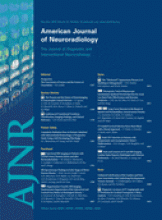Abstract
SUMMARY: In patients with ALS, conventional MR imaging is frequently noninformative, and its use has been restricted to excluding other conditions that can mimic ALS. Conversely, the extensive application of modern MR imaging−based techniques to the study of ALS has undoubtedly improved our understanding of disease pathophysiology and is likely to have a role in the identification of potential biomarkers of disease progression. This review summarizes how new MR imaging technology is changing dramatically our understanding of the factors associated with ALS evolution and highlights the reasons why it should be used more extensively in studies of disease progression, including clinical trials.
Abbreviations
- ALS
- amyotrophic lateral sclerosis
- ALSFRS
- ALS Functional Rating Scale
- Cho
- choline
- Cr
- creatine
- CST
- corticospinal tract
- DTI
- diffusion tensor imaging
- FA
- fractional anisotropy
- FLAIR
- fluid-attenuated inversion recovery
- fMRI
- functional MR imaging
- FTD
- frontotemporal dementia
- FUS/TLS
- fused in sarcoma/translocated in liposarcoma gene
- GM
- gray matter
- 1H-MR spectroscopy
- proton MR spectroscopy
- L
- left
- LMN
- lower motor neuron
- MD
- mean diffusivity
- mIns
- myo-inositol
- MT
- magnetization transfer
- MTR
- MT ratio
- NAA
- N-acetylaspartate
- ns
- not significant
- PD
- proton density
- R
- right
- SOD1
- superoxide dismutase 1
- SPM
- statistical parametric mapping
- TDP-43
- TAR DNA-binding protein gene
- UMN
- upper motor neuron
- VBM
- voxel-based morphometry
- WM
- white matter
- Copyright © American Society of Neuroradiology
Indicates open access to non-subscribers at www.ajnr.org












